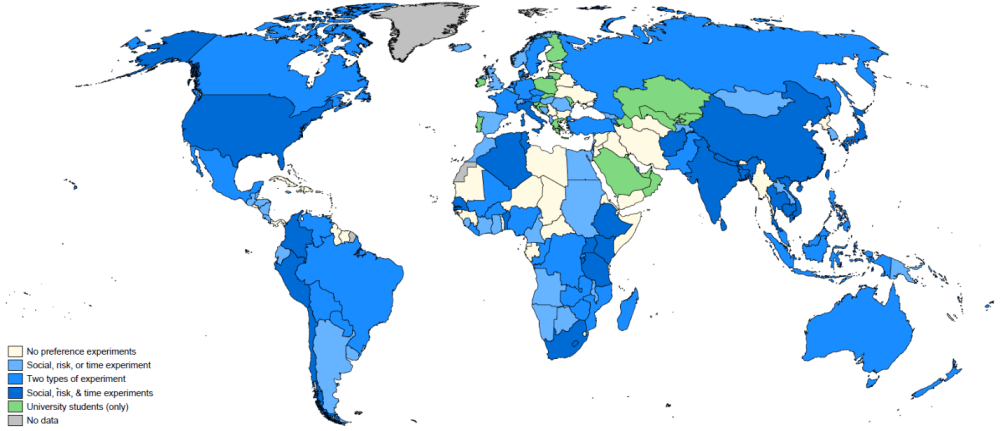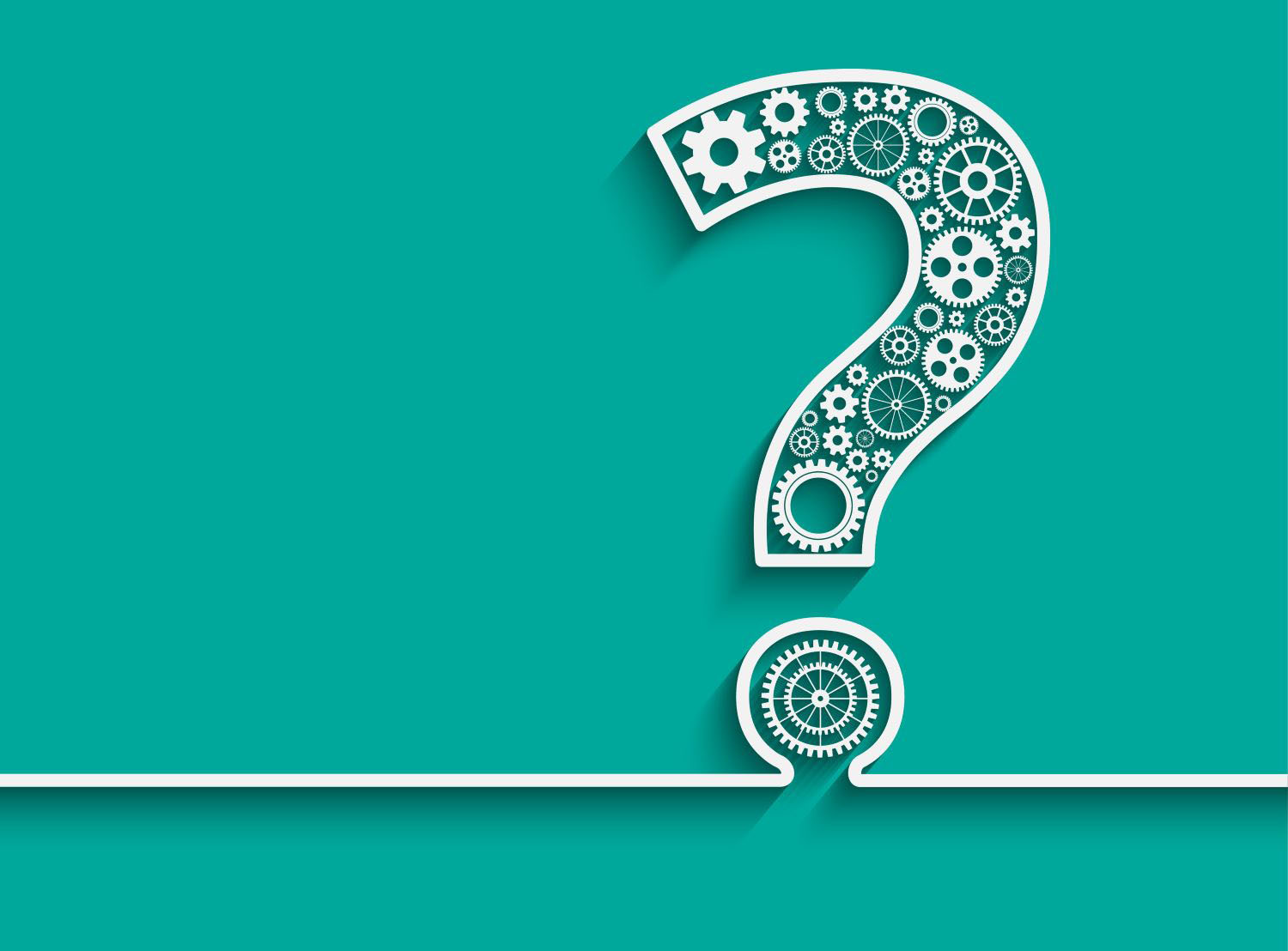Last week, I had the pleasure of giving the keynote at the Symposium on Economic Experiments in Developing Countries (SEEDEC) at the University of California at Berkeley. Since 2011, the SEEDEC conference has been bringing together researchers using laboratory-style experimental methods in developing countries—for example, to study decision-making about risk or the willingness to delay gratification. Studies of this type were quite rare until about 20 years ago. Hans Binswanger did one of the first “lab-in-the-field” experiments measuring risk preferences in rural India in the late 1970s, and Robert Boyd, Jean Ensminger, and Joe Henrich (together with many collaborators) did some of the first lab-in-the-field experiments on prosociality and cooperation two decades later.
As part of my talk, I took a look at the growth of the field over the 40 years since Binswanger did his pioneering work. By my count, social scientists have now run experiments measuring individual preferences in over 100 countries (see map below). Lab-in-the-field papers account for 2.6 percent of articles published in the Journal of Development Economics over the last five years. The takeaway from my talk is that lab-in-the-field experiments may start to play a larger role in policy discussions when researchers incorporate more cutting-edge technologies to elicit individual preferences. You can find a few examples of recent work that embeds preference elicitation in the design of a randomized evaluation here, here, and here.

Source: Author’s calculations based on data from Google Scholar.
I’ve attended this conference quite a bit over the last decade, and every year the papers get better. I couldn’t attend all the talks (unlike Dave Evans, I don’t have the ability to be in two places at the same time). Below, I summarize the talks I was able to attend and highlight a few of the major themes.
An increasing number of papers bridge the gap between laboratory-style preference elicitation experiments (which some would call “field experiments”) and randomized trials (which, confusingly, a non-overlapping set of economists refer to as “field experiments”).
- Noemi Pace shows that cash grants reduce risk aversion (findings measured through either a qualitative survey question or a lab-in-the-field experiment).
- University of Maryland PhD student Fo Kodjo Aflagah finds that facilitating cheap talk helps Senegalese farmers relates to secure higher prices for their crops.
- Catalina Franco shows that performance feedback discourages low-performing Colombian students from exerting effort studying for a college placement exam. More surprisingly, both the best-performing and the worst-performing students are less likely to take the entrance exam when they receive performance feedback.
- UC Berkeley PhD student Susanna Berkouwer is still analyzing the data from a field experiment designed to test whether highlighting cost-savings increases take-up of efficient cookstoves.
- In Rwanda, Andrew Zeitlin finds that offering pay-for-performance incentives leads to the recruitment of more self-interested teachers, but performance pay contracts have a positive overall impact on teacher effort and student achievement.
Quite a few researchers discussed studies that they had run at the Busara Center for Behavioral Economics in Nairobi—whose expanding presence in Kenya and beyond is making it easier and easier to run lab experiments that do not rely on rich-country university student subjects.
- Renate Strobl uses a lab experiment at the Busara Center to show that the willingness to share with others depends on your own exposure to risk.
- Dan Posner argues that tools from social psychology may be better at detecting ethnic bias than lab experiments like dictator and public goods games.
- Prachi Jain shows that stress—induced by either a mock job interview or a hydrocortisone tablet —has little impact on standard measures of economic decision-taking.
Finally, several of the most exciting papers highlighted what lab-in-the-field experiments do best: providing simple, controlled contexts to explore new policy mechanisms and test economic theory.
- Jessica Hoel and Alessandra Cassar both presented fascinating papers about cooperation in polygynous households. In her work in Sengal, Hoel finds that monogamous families are not more cooperative than polygynous families overall; however, second wives are more generous toward their husbands than first wives, though they receive less in return. In experiments in Sierra Leone, Cassar finds that co-wives treat each other more like strangers than family members.
- Travis Lybbert finds that Haitians save more money when offered lottery-linked savings accounts (relative to standard interest-bearing accounts).
- Nova Univeristy PhD students Ana Garcia-Hernandez and Ines Vilela introduce new experimental tools for understanding political voice and measuring corruption in field settings.
- Gustavo Yamada shows that incentives increased Peruvian university students’ cognitive effort, but increased effort tended to reduce performance on a math test.
More information on these papers and the rest of the work presented at the conference is available here.
Disclaimer
CGD blog posts reflect the views of the authors, drawing on prior research and experience in their areas of expertise. CGD is a nonpartisan, independent organization and does not take institutional positions.
Image credit for social media/web: Author





